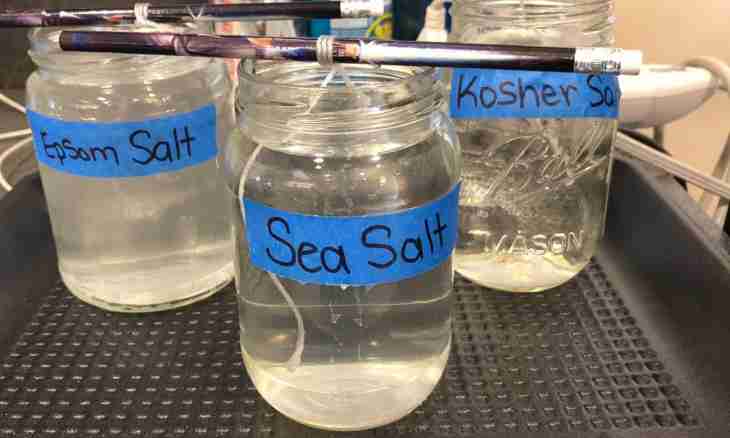In terms of modern chemistry, hydrolysis (from Greek hydro - water, lysis - decomposition, disintegration) salts is such interaction of salts with water as a result of which sour salt (acid) and the main salt (basis) is formed.
What look there will be a hydrolysis, depends on type of the salt dissolved in water. Salt happens four types, depending on that of what remains of the basis and what acid it was formed: salt of the strong basis and strong acid; salt of the strong basis and weak acid; salt of the weak basis and strong acid; salt of the weak basis and weak acid.
1. Salt of the strong basis + strong acid
Such salts are not hydrolyzed at dissolution in water; solution of salt has neutral reaction. Examples of such salts - KBr, NaNO(3).2. Salt of the strong basis + a weak kislotypra dissolution of such salt in water solution gets alkaline reaction owing to hydrolysis.
Example: CH(3)COONa + H (2)O ↔ CH(3)COOH + NaOH (acetic acid - weak electrolyte was formed); The Same reaction in an ionic look: CH(3)COO (-) + H(2)O ↔ CH(3)COOH + OH (-).3. Salt of the weak basis + strong kislotyv result of hydrolysis of such salt solution gets sour reaction. Examples of salts of the weak basis and strong acid - Al (2)[SO(4)](3), FeCl(2), CuBr(2), NH(4)Cl. Example: FeCl(2) + H(2)O ↔ Fe(OH)Cl + HCl; Now in an ionic look: Fe(2+) + H(2)O ↔ Fe(OH) (+) + H (+). 4. Salt of the weak basis + weak the kislotyreaktion on dissolution of such salts has the result education low-dissociating acids and the bases. In solutions of these salts it is impossible to tell anything certain about reaction of the environment, it in each case depends on the relative force of acid and the basis. In principle, solutions of similar salts can have sour, alkaline or neutral reaction. Examples of salts of the weak basis and weak acid - Al (2)S(3), CH(3)COONH(4), Cr (2)S(3), [NH(4)](2)CO(3). Example: CH(3)COONH(4) + H(2)O ↔ CH(3)COOH + NH(4)OH (alkalescent reaction); In an ionic look: CH(3)COO (-) + NH(4) (+) + H(2)O ↔ CH(3)COOH + NH(4)OH.

